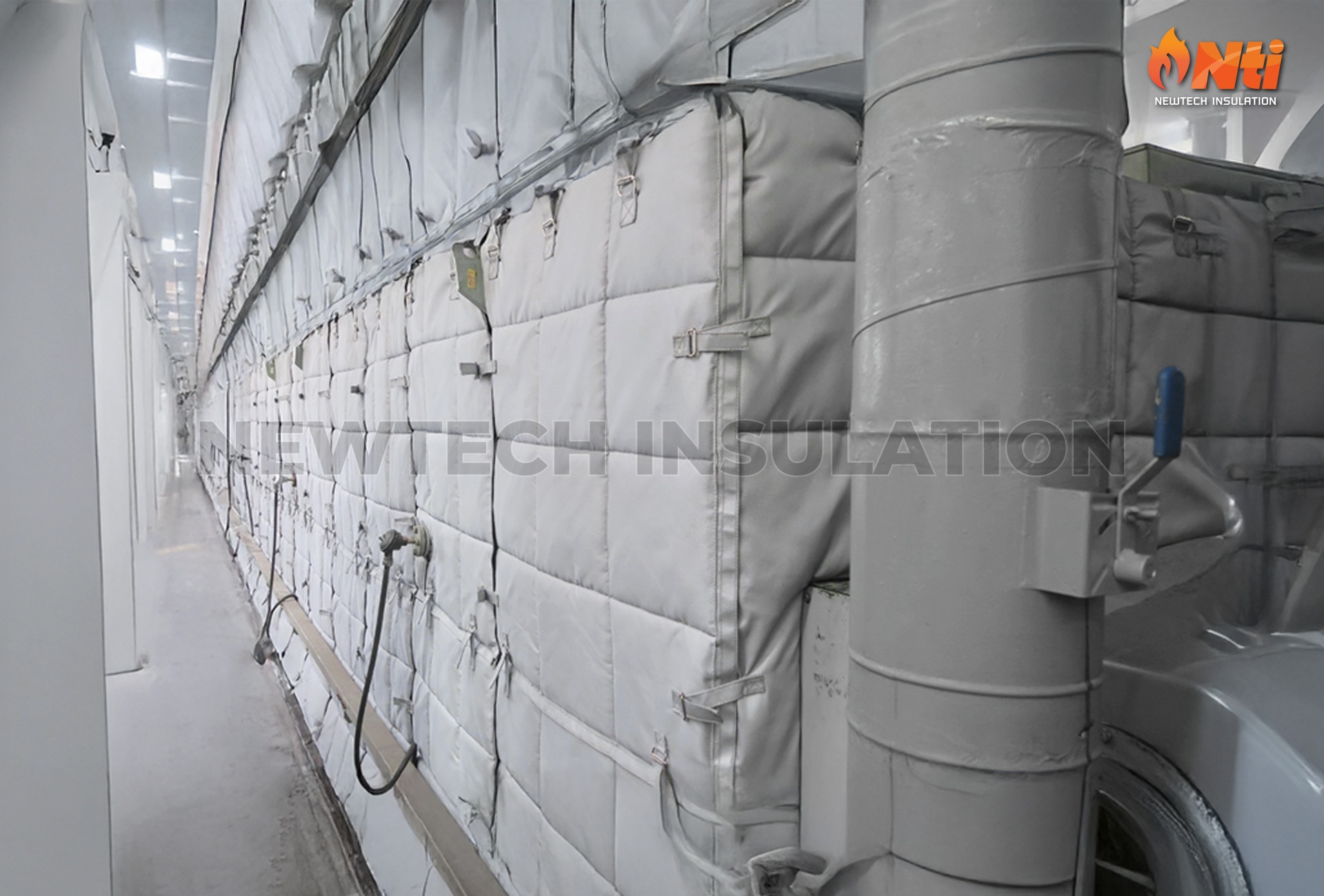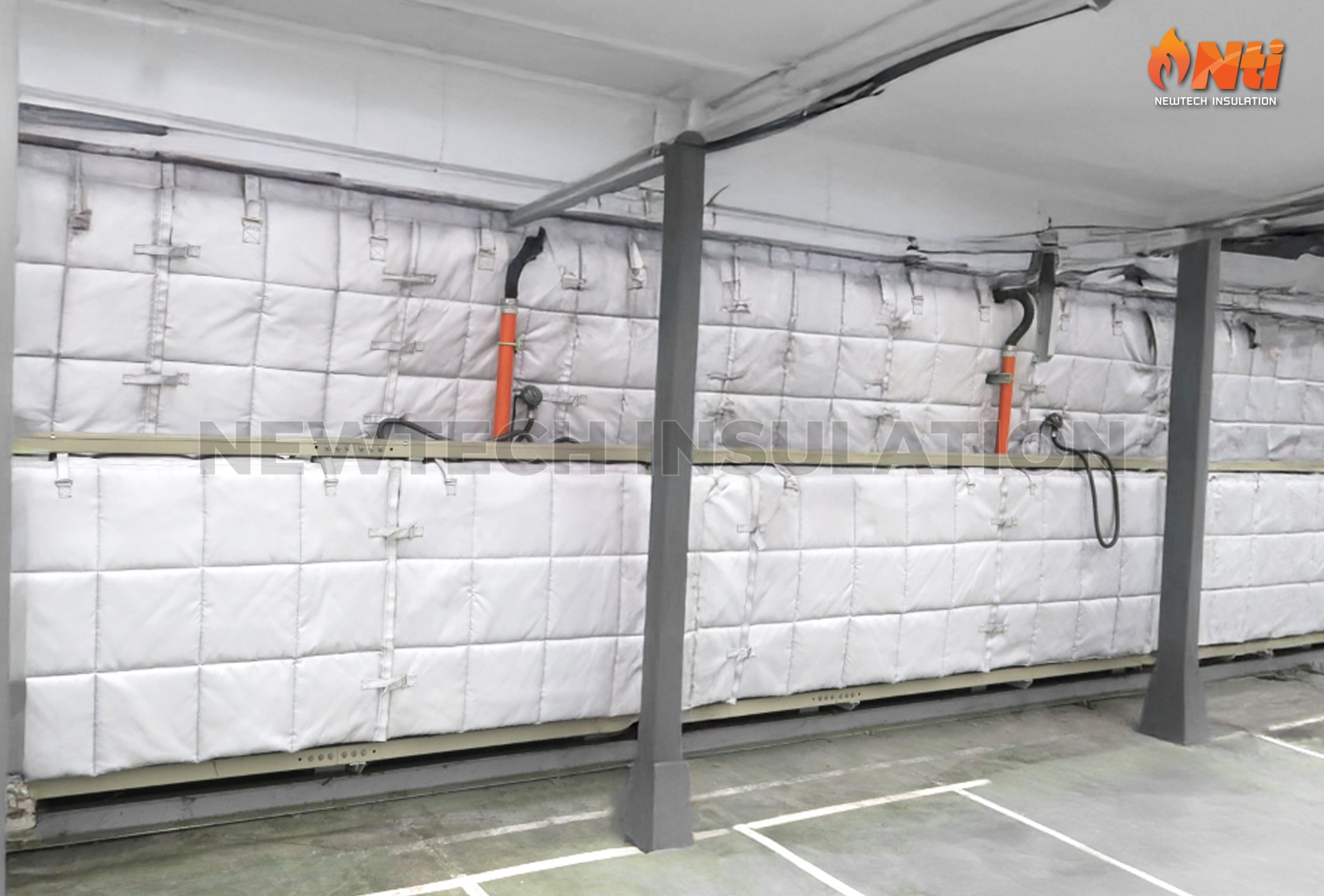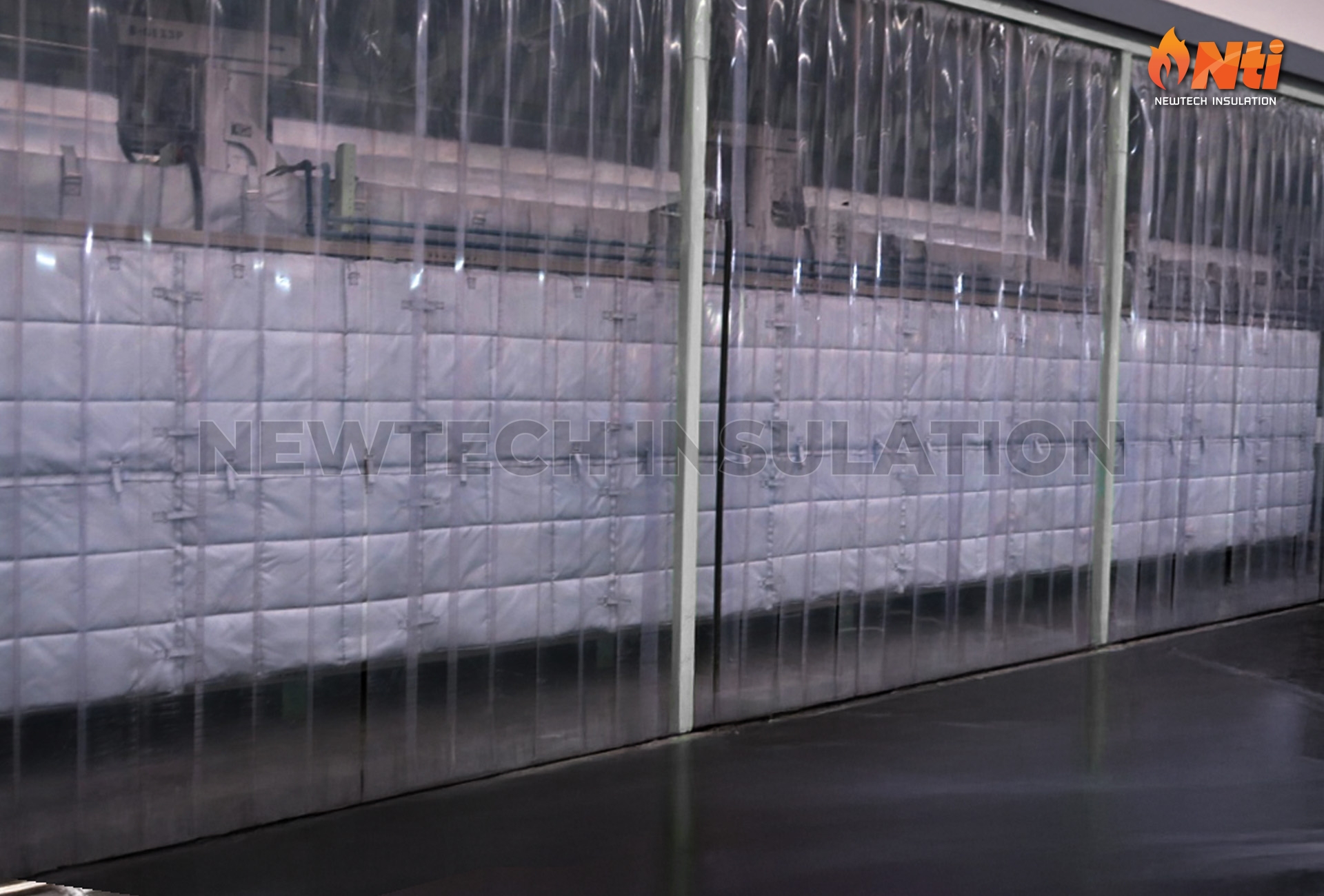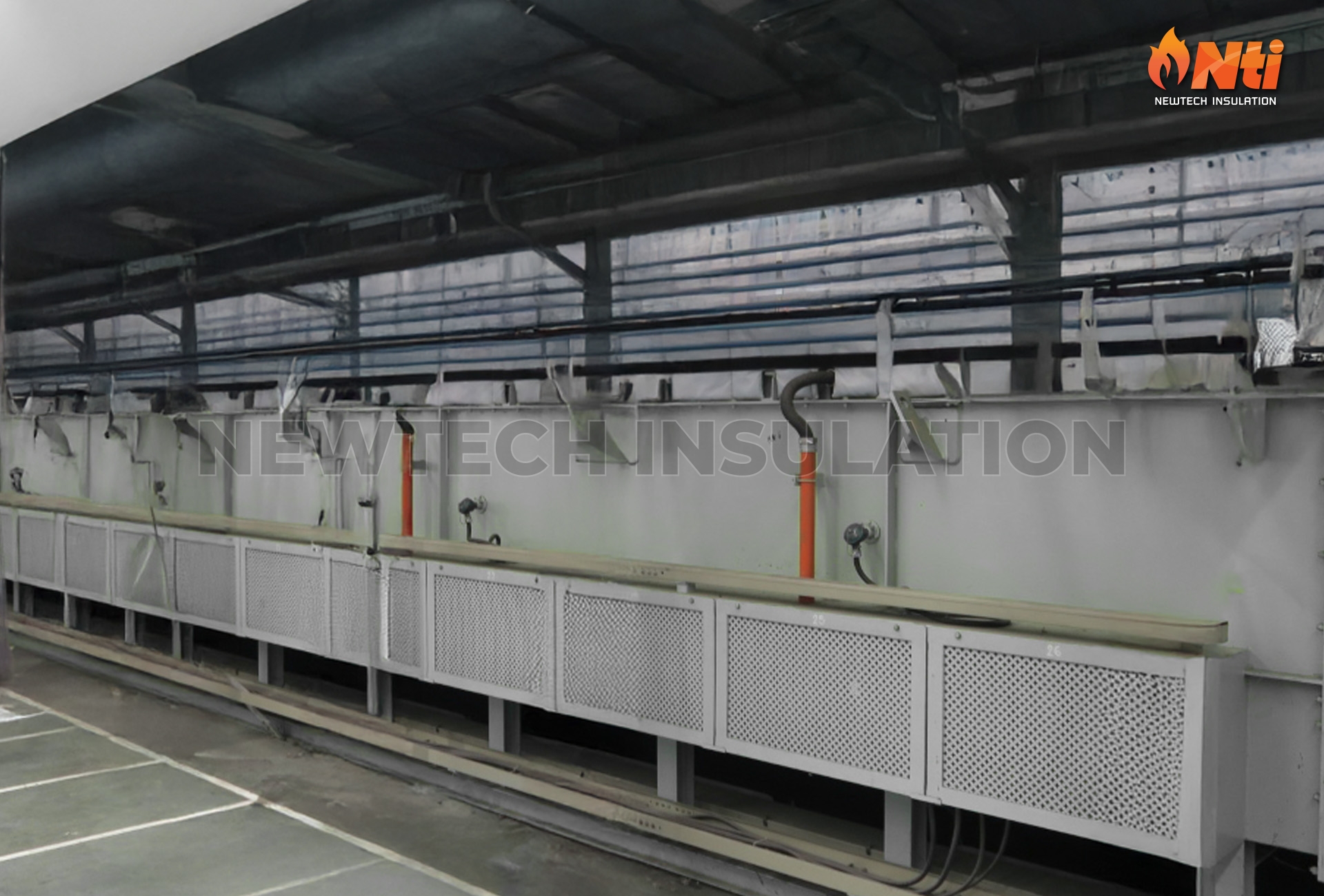







Any unauthorized copying, reproduction, modification, or distribution of any part of this content is strictly prohibited without written permission from Newtech Insulation Company Limited. Any violation will be prosecuted to the fullest extent of the law.
Problems and Causes
A large industrial oven used for metal part processing faced heat radiation issues from its surface area of 220 square meters. The average surface temperature ranged between 60-80 degrees Celsius, resulting in workspace temperatures consistently reaching 34-35 degrees Celsius during the oven’s 24-hour daily operation, running 28 days per month. This heat radiation problem caused fatigue and loss of concentration among employees working near the oven. An initial solution of installing PVC curtains between the oven and workers actually made the situation worse by increasing the oven’s surface temperature and electricity consumption, proving to be an ineffective solution to the core problem.
Improvement Methods
On-site heat problem assessment revealed that heat radiation was primarily occurring from three sides of the oven: top, front, and back. The top surface reached maximum temperatures of approximately 110-120 degrees Celsius, while the front and back surfaces had similar average temperatures of about 75 degrees Celsius. All three surfaces had sufficient area for installing ZAVE® removable thermal insulation. Due to budget constraints, NTI recommended 25mm thick insulation with a k-value of 0.046 W/m⋅K (watts per meter per kelvin) at 100 degrees Celsius. The insulation was manufactured and installed as removable sections specifically for areas requiring inspection and maintenance, eliminating the need to remove all insulation during servicing.
Improvement Results
| Comparison Table: | Average Oven Surface Temperature (Celsius): | Annual Heat Loss (kW): | Annual Electricity Cost (Baht): |
| Before ZAVE® Insulation: | 75.0 | 47,902 | 172,449.00 |
| After ZAVE® Insulation: | 38.8 | 5,905 | 21,260.00 |
| Reduction: | 36.2 | 41,997 | 15,1189.00 |